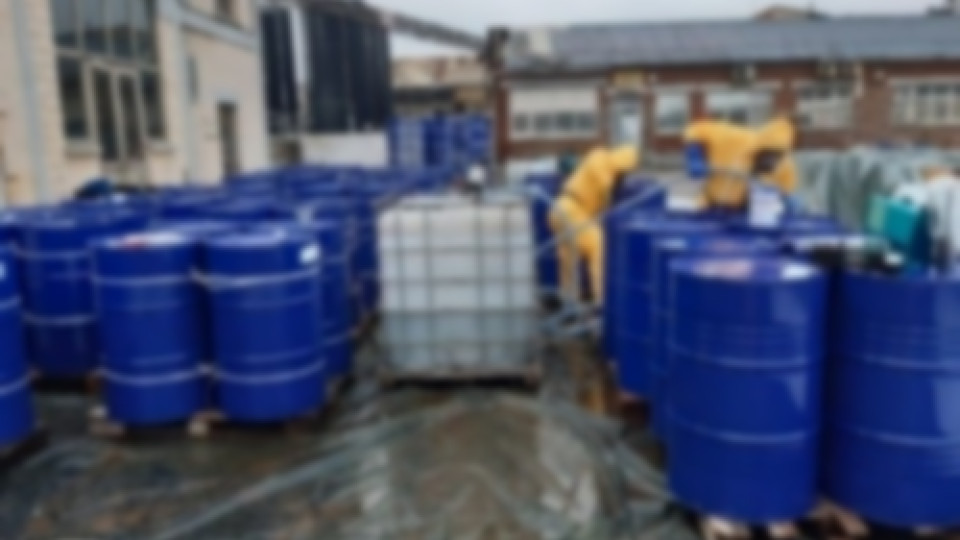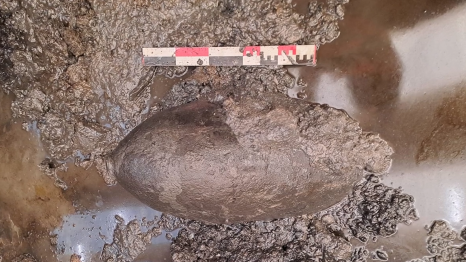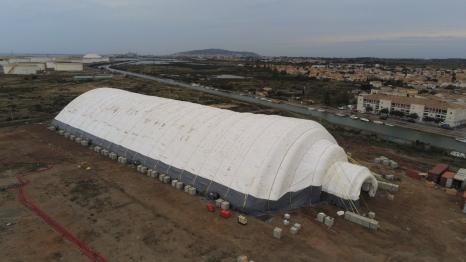Securing a former industrial site polluted with mercury
The deterioration of this former bleach production site, put in compulsory liquidation in 2018, has been endless. Over the years, disrepair, theft, and vandalism had done their worst and weakened its infrastructure. Since the production process of sodium hypochlorite (bleach) involved significant amounts of mercury, the risks to the health of all who entered it and to the environment led the prefecture to issue an order in September 2020 for emergency measures.
A PARTICULARLY COMPLEX PROJECT REQUIRING MULTIPLE AREAS OF EXPERTISE
Selected by ADEME for their extensive experience with mercury contamination, the teams at Séché Urgences Intervention (SUI) encountered a complex situation at the site: the roof had deteriorated, scattering asbestos cement debris, and the site contained not only mercury and mercury-contaminated soil but also polychlorinated biphenyl (PCB) transformers and contaminated water.
For the duration of the operations, the teams must wear filter masks with mercury-specific cartridges as well as special suits. Each work has double protective equipment. Decontamination and hygiene showers are mandatory when leaving the polluted area.
Primary emergency: securing the site. Any further intrusion or vandalism must be prevented. Several access ways have been blocked, the fence has been repaired, and barriers have been installed. Signs warning of the presence of mercury have been put up to deter the most reckless.
Decontamination work can then truly begin. Primary objective: to prevent asbestos fibers, which are highly carcinogenic, from spreading even further. The debris is collected, packaged in bags, and sent to a specialized treatment center.
DRAWING OUT THE MERCURY
High-efficiency (HEPA) aspirators equipped with activated carbons can then be implemented to recover the mercury found throughout the production building. Several passes will be necessary. After each aspiration, mercury naturally rises from the ground, which is saturated with it. At the same time, the barrels of mercury-contaminated soil found at various locations are repackaged and removed. In total, nearly 600 kg of pure mercury and 12 tons of mercury-contaminated soil will be transported to the Trédi Hombourg (68) hazardous waste platform.
The teams then attack the transformers. They are first drained of their polluting oil (PCB) and then removed using a special crane truck equipped with retention tanks to prevent any leakage. Direction, the Trédi Saint Vulbas (01) treatment center.
The focus will then turn to the 27 1,000 L containers of highly mercury-contaminated products, stored on the site and abandoned when it closed. Their removal will require a complex repacking operation: pumping the liquids and transferring the sludge into new tanks.
DRAINING OFF THE CONTAMINATED WATER
The problem of water management remains: the site’s wastewater treatment plant (WWTP) is shut down, and one of its basins is full of polluted water and sludge contaminated with mercury and asbestos. The SUI teams will need three days and five tanks to pump the 120 tons of water and then pack up the 6 m3 of sludge and 20 kg of asbestos found at the bottom of the basin.
To bring this entire emergency operation to a close, the SUI specialists are also responsible for giving recommendations for continuation of the work: containing certain areas to limit the spread of mercury vapor, repairing the roof to prevent rainwater runoff in the workshop, purging and dismantling pipes, installing a new water treatment system… There’s still a long way to go before a complete rehabilitation of the site can be expected, but that’s another story!
RESOURCES USED
5 employees trained and authorized to deal with mercury hazards
HEPA aspirators equipped with activated-carbon filters
Ongoing analysis of the level of mercury vapor in the air
Ventilation system to extract mercury vapors
Personal Protective Equipment (PPE) with ventilated masks and special filtration cartridges
 |
 |
 |
| Securing the site | Draining the transformers | HEPA aspirators |
At such a complex „multi-hazard“ site, only a seasoned team, trained and authorized to tackle mercury and asbestos hazards and accustomed to wearing Self-Contained Breathing Apparatuses (SCBA), could succeed and carry out the operations in the best safety conditions.
ISO 9001, ISO 14001, and ISO 45001 certified, Séché Urgences Intervention is led by experts who know how to control chemical hazards throughout decontamination operations and are capable of secure management of all the materials (water, sludge, debris, etc.), their removal, and directing them to the appropriate treatment sectors.
ENVIRONMENTAL EMERGENCY?
START HERE :

MORE EMERGENCY INTERVENTIONS
Hello,
We will do our best to answer you as soon as possible.





